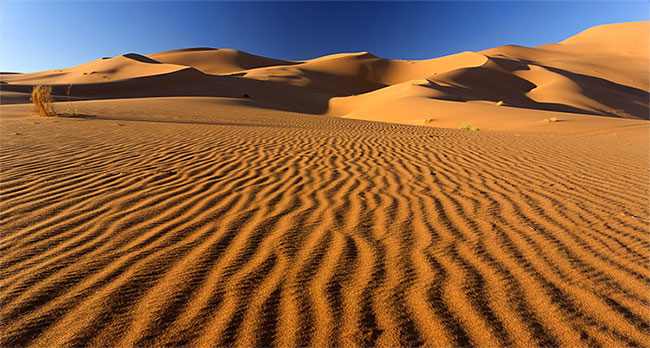Why can't sand and sea sand be used for construction?
Sea sand and desert sand are of size, shape, and unsuitable composition as construction materials with low durability and load capacity.
Sand can be divided into three types based on sand grain size, which are coarse sand, medium sand and fine sand . The determination of sand particle size is important because this directly affects the quality of the paving layer (in terms of elasticity, durability and load capacity). The shape of sand grains determines the density, firmness and technical properties . Smooth sand grains are easier to mix than angled or oblong sand grains with a rough surface.

Desert sand is not used in construction despite an abundant supply.(Photo: iStock).
Sea sand and desert sand rarely meet the requirements for building construction materials, especially in untreated condition. Desert sand grains are smoother and smoother, so the surface of this sand does not have enough multi-dimensional chemical bonds. If the grain size is too small, the mortar will be slippery and have poor durability.
If the sand is in a dry state, the bond between the grains of sand provides quite a load capacity. But if the sand gets wet, the bond will weaken and when overloaded, the links will break, causing the sand layer to collapse.
Sea sand is also round and very smooth.Chlorine in the sea sand causes erosion of steel and steel, reducing the load capacity of iron and steel, and reducing the life of the construction . Sea sand does not have high compressive strength, so it is not suitable for construction activities. In addition, salt in sea sand often absorbs moisture from the air, causing moisture to the building.
- Where does sand in the sea come from?
- Turn dirty sand into clean sand
- Warning the world is about to run out of sand
- The secret of the sand castle helps restore ancient construction techniques
- Where does sand in the sea come from?
- Turn urine into brick to build houses
- What is sand pig?
- Unbelievable but true story: the world is falling into a sand crisis
- Hidden beauty of sand
- Video: The phenomenon of sand creaking between the calm wind in America
- Explain the phenomenon of sand singing
- The pig has 2 quintals, detecting objects suspected to be rare and precious pigs weighing nearly 1kg
- Producing artificial sand from waste iron from a cast iron factory
 'Fine laughs' - Scary and painful torture in ancient times
'Fine laughs' - Scary and painful torture in ancient times The sequence of numbers 142857 of the Egyptian pyramids is known as the strangest number in the world - Why?
The sequence of numbers 142857 of the Egyptian pyramids is known as the strangest number in the world - Why? History of the iron
History of the iron What is alum?
What is alum?